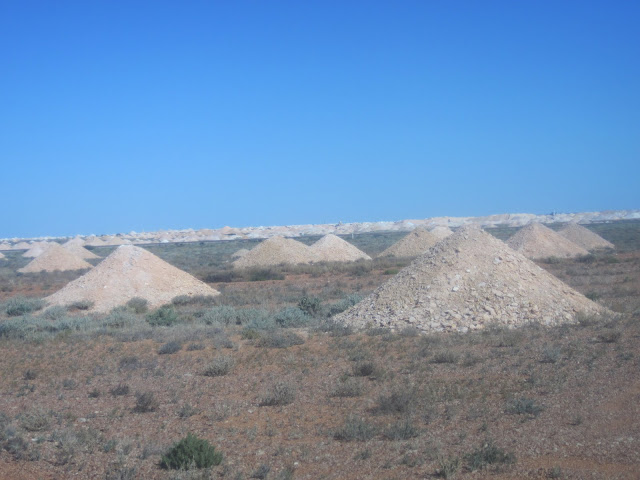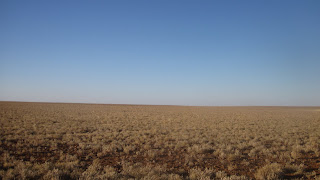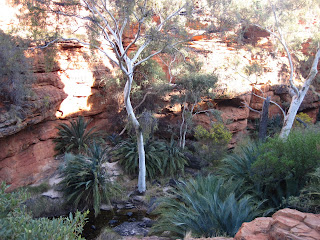One Fish, Two Fish Red Fish, Blue Fish
From: Dr. Seuess – “One Fish, two Fish”
One Fish, Two Fish…… a Thousand Fish
Red Fish, Blue Fish…… Green Fish, Pink Fish, Purple Fish, White Fish, Black Fish, Yellow Fish, Orange Fish, every size, shape and color of the rainbow Fish, even some color changing Fish
From: Norb’s – “Now I know why it’s not called the average barrier reef”
 |
| Leaving land behind |
You can’t visit Australia without making a trip to the Great Barrier Reef, that would be like going to Paris and not seeing the Eiffel Tower or San Francisco and not viewing the Golden Gate Bridge; just unthinkable. Although those two examples are man-made structures, the Great Barrier Reef is one of the Seven Wonders of the Natural World. It stretches for 1600 miles North to South along Australia’s North-East coast. It is not one contiguous reef, but a series of ~4000 reefs, bommies, and islands; like little underwater cities, similar in many ways, but each unique with its’ own cast of marine life living in a neighborhood of sheltering coral. There are many ways to view the Great Barrier Reef, you can see it from the air by flying over in a helicopter, sail out to the reef and see it from the deck of a boat, snorkel along the top or view it from outer space (yes it can, it's that big), but really the only way to experience The Great Barrier Reef is underwater, below the surface, in the blue waters of the Coral sea. The weekend before I departed for Australia, I braved the frigid waters of Pearl Lake, just south of the Wisconsin border, donning a wetsuit, hood, boots and gloves, to complete my training and become a certified open water diver. My main purpose in enduring dives that felt like a Chicago winter was so that I could fulfill a dream of diving the warm, clear waters of the Great Barrier Reef. Day trips from Cairns are common, but since it’s about a three hour boat ride to the outer reef I booked a 3 day live-aboard, where you basically live on a boat for three days and go diving. Never having done one before I didn’t know what to expect. There were 23 divers including myself on board, plus a Captain and crew of six. The group ran the full gamut of divers from the very experienced with hundreds of dives under their belt, to a group completing their open water certification; sure beats Pearl Lake. Since the boat wasn’t full I had a cabin all to myself. The day started at 6am (how many times have you heard me say that) with a pickup from my hotel and by ~7:00 we were on the boat making our way to the outer reef.
 |
| A breaching humpback whale - honestly! |
About an hour into our ride I was sitting on the top deck taking in the sun with several others when one said “Oh look, there’s a whale”. Sure enough off our port side was a breaching humpback whale. It came out of the water at least six times before we were out of range. It was a wonderfull unexpected bonus. The sea was very choppy as we cruised on and many of the divers became seasick and “fed the fish”. This must be a routine experience because the crew was immediately on hand with biodegradable bags and tissues to comfort and aid the stricken; I took medicine and had no problem. After what must have seen like eternity for those green about the gills we arrived at the outer reef and our first dive site.
 |
| The Great Barrier Reef - Awesome isn't it |
The dive schedule for the three days was basically dive, eat breakfast, dive, eat lunch, dive, eat dinner, and end with a night dive; except on the last day, for a total of eleven dives. That would be a lot of diving in a short period of time. My time underwater per dive averaged about 40 minutes because I am still learning to control my breathing; I tend to be a heavy breather, and it is also dependent on the depth of the dive; the shallower the depth, the longer your air tends to last. My deepest dive was 20.6 meters (~68 feet) and the shallowest 10 meters (~33 feet), with an average around 14 meters (46 feet). Diving is really a relatively safe sport if you concentrate and follow the safety rules. One of those is to dive with a buddy. A buddy is there to help in case something goes wrong, thankfully during our dives no one needed emergency assistance. Since I didn’t come with a buddy, I was teamed up with a guy from France named Guy. We were also joined by Antoine another guy from France and Ana a young girl from Germany. The four of us teamed together for all our dives. I was really glad to be Guy’s buddy because he was a seasoned diver, with a lot of experience and very good at navigation. We’d get a dive briefing that would be something like: go in the water and swim in that direction (pointing) towards the bommie, keep it on your left and swim around it, when you come to the big mushroom coral (and it was big and looked surprising like a mushroom) the boat should be at 320 degrees from there. If you get lost the reef is always at 120 degrees. Guy was great and only got lost once or twice, he just surfaced, took a heading for the boat, then came back down and led us back. He also helped me with me breathing and reminding me to surface slowly. My first few dives I came up to fast which is a no-no in diving, but by the end I was in control. When we had own town everyone would sit around talking and you get to hear about some of their diving experiences. Guy once had an octopus on his face which would freak me out if that happened and a more serious episode happened to one of the German brothers who were traveling together. He was at about 22 meters (~72) when he ran out of air. When that happens you are taught to take the safe secondary air source from your buddy. Well he said he forgot all his training and shot to the surface. That is a very dangerous thing to do as nitrogen bubbles form in your body, mostly in the joints. That time he was lucky and had no serious side effects. Although I can understand his reaction; if you’re underwater and you can’t breathe you body wants to surface. Obviously he violated several safety rules; not near his buddy and not watching his air pressure gauge to put himself in that position. I hope I never have to test myself in that type of situation.
 |
| My towel is the blue striped one |
 |
| Day fish |
 |
| Night fish |
Dive boats in Australia have been known to occasionally leave divers behind with fatal results. They even made a movie, "Open Water", about one incident. I saw the movie, not a happy ending. It seems incredible to me that something like that could happen. I thought our boat had agood procedure. One crew member was on the dive deck, gave a final check of your equipment, wrote your name down, your buddys name down and the time you entered the water. When you got back to the ship, they noted the time and your depth and had you sign the dive sheet; and they did occasional role calls to make sure everyone was present. I did catch a wrong date on one of the dives forms; once in QA always in QA. It seemed like a solid system. Maybe they changed the rules after the incident. We did two night dives, my first time ever. You get a little flashlight and you and your buddy wear glowsticks of the same color on your tank so you can recognize each other in the dark water. Surprisingly you can see fairly well even with the small light, but my guy Guy brought his own light which was powerful enough to get a suntan. When they turn the lights on by the diving platform in the back of the boat, little fish are attracted to the light. With the little fish, come bigger fish that want to eat them. We even had one little fish jump on the platform to escape being eaten. Unfortunately he had to go back in the water; we don’t know if he avoided being someone’s dinner. And with the bigger fish came ….shark! Yes, that’s right, shark. As you are standing on the platform getting ready to step off into this school of swarming, feeding fish you see flashes of shark. You are told they are “harmless” reef shark, but I must say it is a little disconcerting jumping into the water knowing they are there. Night diving is okay, but I prefer day diving.As for the rest of the diving, all I can say is the Great Barrier Reef is........ GREAT! Think of the best aquarium you’ve ever seen, multiply it by a hundred, and put yourself in the middle of the tank. I saw amazing hard coral, fish of every size, shape and color, shrimp, clams, jellyfish, rays, turtles, moray eel and shark. If you’ve never been diving, it is hard to explain because it is not only what you see but what you feel. It’s like flying through water. You’re just floating midway between the surface and the bottom, listening to yourself breathe and bubbles floating to the surface, surrounded by all this marine life, it’s just incredible. Visibility was over 25 meters, sunlight streaming down, color, everwhere, sea life swimming all around. Many times I would just stare mouth agape, which is really hard to do with a regulator in your mouth, at the beauty of it all. Watching turtles effortless glide through the water, amazing! Seeing a school of about 70 bumphead parrot fish swimming along like a train 2 or 3 deep, amazing! These are big fish, about 3 feet long built like tanks. Puffer fish, box fish, barracuda, trigger fish, parrot fish… amazing, amazing, amazing! Moray eel coming out of a coral cave, amazing! Of course Nemo i.e. clown anemones and a dozen other types of anemones, amazing! The biodiversity of the Great Barrier Reef is phenomenal. Unfortunately I did not have an underwater camera. If you're a diver and haven't been to the Great Barrier reef, you've got to go and if you're not a diver, learn to dive and go. You will not be disappointed. All I can say is, now I know why it’s not called the average barrier reef!
 |
| Amazing! Isn't it? |
From down underwater
norb



























































